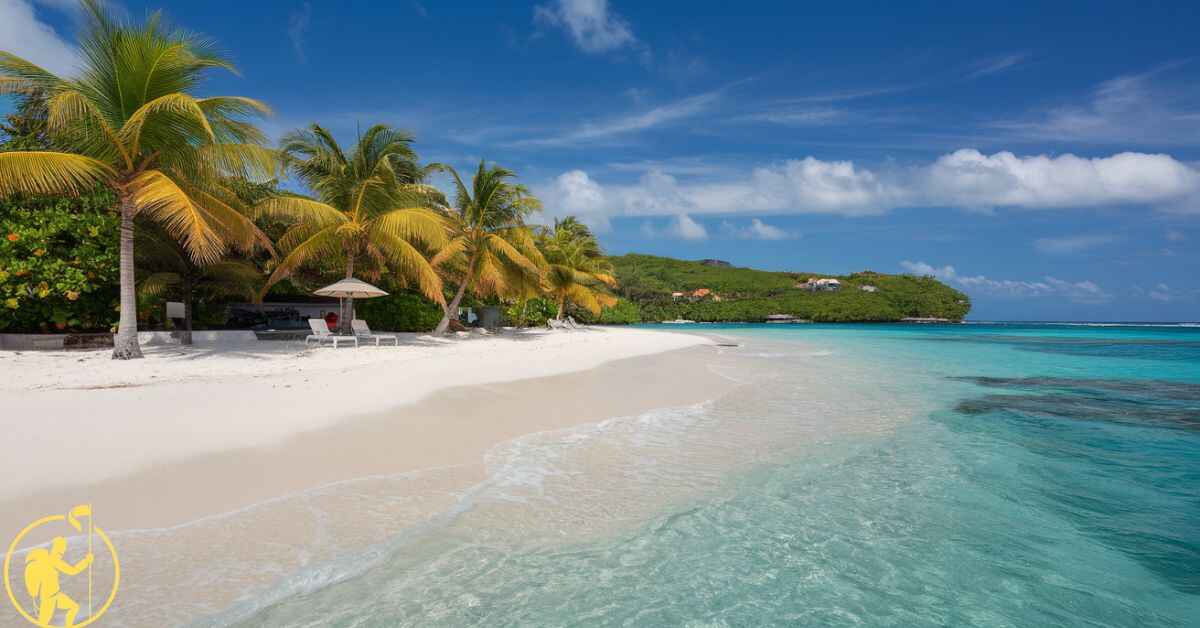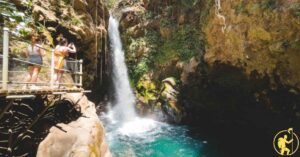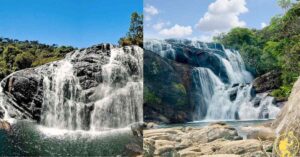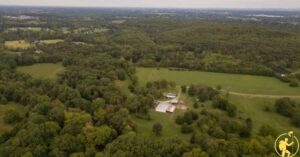Nestled in the azure waters of the Caribbean Sea lies a hidden gem waiting to be explored: the Spanish Virgin Islands. These enchanting isles offer a unique blend of natural beauty, rich history, and vibrant culture. The Spanish Virgin Islands, often overlooked by tourists, are a true paradise for those seeking an authentic Caribbean experience.
The Spanish Virgin Islands consist of two main islands: Culebra and Vieques. These islands, along with several smaller cays, form an archipelago off the eastern coast of Puerto Rico. Despite their name, the Spanish Virgin Islands are actually part of the United States territory of Puerto Rico. This unique status gives them a distinct character that sets them apart from other Caribbean destinations.
What Are the Spanish Virgin Islands?
The Spanish Virgin Islands are a group of small islands located between Puerto Rico and the US Virgin Islands. The two principal islands, Culebra and Vieques, are the heart of this archipelago. Culebra, known as “Snake Island” due to its curvy shape, is the smaller of the two. Vieques, often called the “Isle of Charm,” is larger and more developed. Together, these islands offer visitors a perfect blend of pristine beaches, lush landscapes, and laid-back island living.
Geographical Location and Significance
The Spanish Virgin Islands occupy a strategic position in the northeastern Caribbean. They lie about 20 miles east of Puerto Rico’s main island and just west of the US Virgin Islands. This location makes them an ideal stopover for sailors and a convenient destination for travelers from both the United States and Europe. The Spanish Virgin Islands play a crucial role in the region’s ecosystem, serving as important habitats for various marine and terrestrial species.
Historical Background of the Spanish Virgin Islands
The history of the Spanish Virgin Islands is as colorful and diverse as the islands themselves. From ancient indigenous settlements to Spanish colonial rule and eventual US acquisition, these islands have witnessed centuries of change and cultural blending. Understanding this rich past is key to appreciating the unique character of the Spanish Virgin Islands today.
Pre-Columbian Era and Indigenous Inhabitants
Long before European explorers arrived, the Spanish Virgin Islands were home to indigenous Taíno people. These skilled seafarers and farmers lived in harmony with the islands’ natural environment for centuries. They left behind artifacts and petroglyphs that offer glimpses into their advanced culture. The Taíno’s legacy can still be felt in the islands’ place names, traditional foods, and cultural practices.
Spanish Colonial Period
The Spanish Virgin Islands got their name from the period of Spanish colonization that began in the late 15th century. Christopher Columbus claimed these islands for Spain during his second voyage to the Americas in 1493. For the next few centuries, the Spanish used the islands primarily as a strategic outpost. They also attempted to convert the indigenous population to Christianity and exploit the islands’ natural resources.
Transition to US Territory
The Spanish-American War of 1898 marked a turning point for the Spanish Virgin Islands. As part of the Treaty of Paris, Spain ceded Puerto Rico and its surrounding islands to the United States. This transfer included Vieques and Culebra, which became part of the US territory of Puerto Rico. In the early 20th century, the US Navy established bases on both islands, significantly impacting their development and daily life.
The Islands of the Spanish Virgin Islands
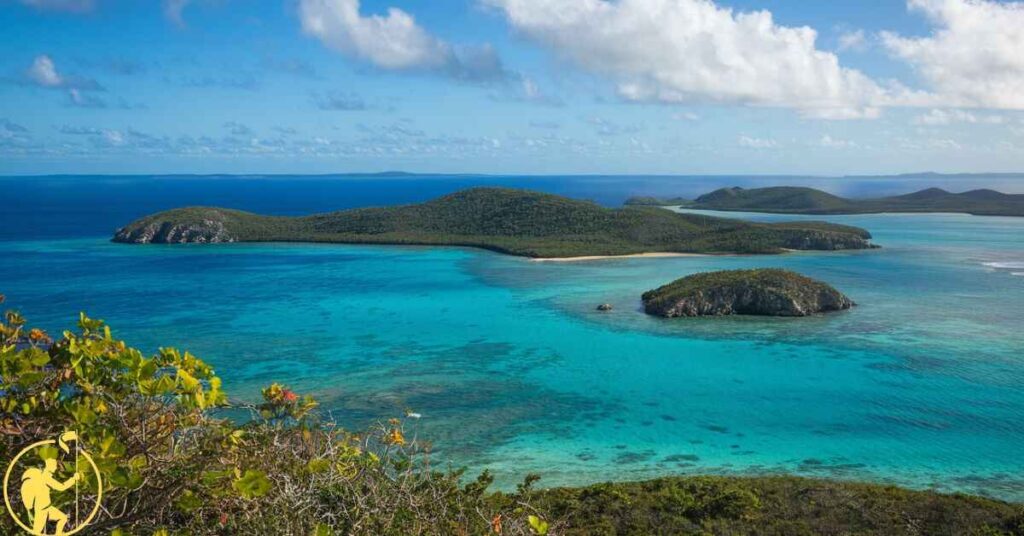
The Spanish Virgin Islands may be small in size, but they pack a big punch when it comes to natural beauty and charm. Each island in this archipelago has its own unique character and attractions. From pristine beaches to lush forests and crystal-clear waters, the Islands offer a diverse range of landscapes and experiences for visitors to enjoy.
Culebra: The Snake Island
Culebra, the smaller of the two main Islands, is a nature lover’s paradise. Its most famous attraction is Flamenco Beach, consistently ranked as one of the world’s best beaches. With its powdery white sand and turquoise waters, Flamenco Beach is a true tropical dream. But Culebra offers more than just beautiful beaches. The Culebra National Wildlife Refuge covers about a third of the island, protecting diverse ecosystems and wildlife.
Vieques: The Isle of Charm
Vieques, the larger island on this Island, is known for its stunning natural beauty and unique attractions. One of its most famous features is the Bioluminescent Bay, where microscopic organisms create a magical light show in the water at night. Vieques is also home to wild horses that roam freely across the island, adding to its charm and natural allure. With its mix of beautiful beaches, lush forests, and historic sites, Vieques offers something for every type of traveler.
Surrounding Cays and Islets
Beyond Culebra and Vieques, the Islands include several smaller cays and islets. These tiny islands, such as Culebrita and Cayo Norte, offer even more opportunities for exploration and adventure. Many of these smaller islands are uninhabited, providing pristine environments for snorkeling, diving, and wildlife watching. They serve as important habitats for seabirds and marine life, contributing to the region’s rich biodiversity.
Natural Beauty and Ecosystems
The Spanish Virgin Islands are a haven of natural beauty, boasting diverse ecosystems both above and below the water. From pristine beaches to lush forests and vibrant coral reefs, these islands offer a stunning array of natural wonders. The unique geography and climate of the Islands have created habitats for a wide variety of plant and animal species, many of which are found nowhere else in the world.
Pristine Beaches and Coastlines
The beaches of the Islands are among the most beautiful in the Caribbean. Flamenco Beach on Culebra and Sun Bay on Vieques are just two examples of the stunning coastal areas found here. These beaches feature soft white sand, crystal-clear waters, and swaying palm trees. Many of the beaches in the Spanish Islands remain relatively undeveloped, offering visitors a chance to experience truly unspoiled natural beauty.
Marine Life and Coral Reefs
Beneath the waves, the Spanish Islands are home to vibrant coral reefs teeming with marine life. These underwater ecosystems support a diverse array of fish, sea turtles, and other marine creatures. Snorkeling and scuba diving are popular activities, allowing visitors to explore this underwater world up close. The waters around the Islands are also important breeding grounds for various species, including endangered sea turtles.
Tropical Forests and Wildlife
While the beaches may get most of the attention, the Spanish Virgin Islands also boast lush tropical forests. These ecosystems support a diverse range of plant and animal life, including many bird species.
Birdwatching is a popular activity, with the chance to spot both resident and migratory species. Conservation efforts on the islands aim to protect these valuable habitats and the wildlife they support, ensuring their preservation for future generations.
Visiting the Spanish Virgin Islands
Planning a trip to the Spanish Islands is an exciting prospect for any traveler. These islands offer a unique Caribbean experience, combining natural beauty with a laid-back atmosphere. Whether you’re looking for a relaxing beach vacation or an adventurous eco-tour, the Islands have something to offer. Here’s what you need to know to plan your visit to this tropical paradise.
How to Get There
Reaching the Spanish Islands typically involves first flying to Puerto Rico’s main island. From there, you can take a short flight or ferry ride to either Culebra or Vieques. Small planes operate regular flights from San Juan to both islands, offering quick and scenic transportation.
Ferries are a more budget-friendly option, departing from Fajardo on Puerto Rico’s east coast. Once on the islands, you can rent a car, scooter, or bicycle to explore.
Best Time to Visit
The Spanish Virgin Islands enjoy a warm, tropical climate year-round, making them a great destination in any season. However, the best time to visit is generally from December to April, during the dry season.
This period offers sunny weather and lower humidity, perfect for beach activities and outdoor exploration. The hurricane season runs from June to November, with September and October being the peak months. While prices may be lower during this time, there’s a higher risk of storms.
Accommodation Options
The Islands offer a range of accommodation options to suit different budgets and preferences. On both Culebra and Vieques, you’ll find small hotels, guesthouses, and vacation rentals.
Many accommodations are family-run, offering a more personal and authentic experience. Eco-lodges and beachfront cottages are popular choices for those seeking a closer connection to nature. While luxury resorts are less common than in other Caribbean destinations, you can still find upscale options, especially on Vieques.
Activities and Attractions in the Spanish Virgin Islands
The Spanish Virgin Islands offer a wealth of activities and attractions for visitors to enjoy. Whether you’re seeking relaxation on pristine beaches, adventures in nature, or cultural experiences, these islands have it all. From water sports to hiking trails and historical sites, there’s no shortage of things to do and see in the Spanish Virgin Islands.
Beach Activities and Water Sports
The beaches of the Spanish Virgin Islands are the main draw for many visitors, and for good reason. Swimming in the crystal-clear waters is a must-do activity. Snorkeling is popular, with many beaches offering excellent opportunities to see colorful fish and coral reefs right offshore.
Kayaking is another great way to explore the coastline, with guided tours available to hidden coves and mangrove forests. For the more adventurous, kiteboarding and windsurfing are popular on some of the windier beaches.
Hiking and Nature Exploration
While the beaches are stunning, the Spanish Virgin Islands also offer plenty of opportunities for land-based activities. Hiking trails crisscross both Culebra and Vieques, leading through lush forests and to scenic viewpoints.
Guided eco-tours are available, offering insights into the islands’ unique ecosystems and wildlife. On Vieques, you can even take horseback riding tours along the beach or through the countryside.
Historical and Cultural Sites
The Spanish Virgin Islands have a rich history, and there are several sites where visitors can learn about the islands’ past. On Vieques, the Fort Conde de Mirasol is a well-preserved 19th-century Spanish fort that now houses a museum.
The Vieques Archaeological Museum offers insights into the islands’ pre-Columbian inhabitants. On Culebra, you can visit the ruins of an old lighthouse on Culebrita Island. These historical sites provide a fascinating contrast to the islands’ natural attractions.
Culinary Experiences in the Spanish Virgin Islands
The cuisine of the Islands is a delightful blend of Caribbean, Spanish, and American influences. Fresh seafood, tropical fruits, and local spices feature prominently in many dishes. Exploring the local food scene is an essential part of any visit to the Spanish Virgin Islands, offering a taste of the islands’ culture and history.
Traditional Dishes and Local Specialties
One of the most popular dishes in the Spanish Virgin Islands is mofongo, a savory dish made from mashed plantains and often filled with meat or seafood. Fresh seafood is, of course, a staple of the local cuisine.
You’ll find everything from grilled fish to lobster and conch fritters on many menus. Puerto Rican influences are strong, with dishes like arroz con gandules (rice with pigeon peas) and lechón (roast pork) being common. Don’t forget to try some of the local tropical fruits, which are often used in refreshing drinks and desserts.
Where to Eat: Top Restaurants and Eateries
Both Culebra and Vieques offer a range of dining options, from casual beachfront bars to upscale restaurants. On Culebra, Zaco’s Tacos is a popular spot known for its fresh fish tacos and relaxed atmosphere. Dinghy Dock offers waterfront dining with a menu featuring fresh seafood.
On Vieques, El Quenepo is a favorite for fine dining, offering innovative dishes using local ingredients. For a more casual experience, check out the food trucks and kiosks that can be found near popular beaches. These often serve delicious local specialties at budget-friendly prices.
Shopping in the Spanish Virgin Islands
While the Spanish Virgin Islands may not be a major shopping destination, they offer unique opportunities to purchase local handicrafts and souvenirs. Shopping here is more about finding authentic, locally-made items rather than brand-name goods. It’s a great way to support the local economy and bring home a piece of the islands’ culture.
Local Handicrafts and Souvenirs
Handmade jewelry featuring local materials like sea glass and coconut shells is popular among visitors. You can also find locally-made clothing, often featuring bright Caribbean colors and patterns.
Art galleries showcase work by local artists, offering paintings, sculptures, and prints inspired by the islands’ natural beauty. Seashell crafts, such as ornaments and jewelry, make for unique souvenirs. Some shops also sell locally-produced food items like hot sauces, spice blends, and rum.
Markets and Shopping Areas
On both Culebra and Vieques, you’ll find small shops and boutiques in the main towns. These often sell a mix of local handicrafts, beachwear, and practical items for tourists. Some hotels and resorts have gift shops that feature local products.
Occasional markets or craft fairs may be held, especially during peak tourist season. These events are great opportunities to meet local artisans and find unique items. Remember that many businesses on the islands operate on “island time,” so be prepared for relaxed opening hours.
Living in the Spanish Virgin Islands
For some, a visit to the Spanish Virgin Islands turns into a desire to make these beautiful islands their home. Living in the Spanish Virgin Islands offers a unique lifestyle, combining the laid-back Caribbean atmosphere with the conveniences of being part of the United States. However, island living also comes with its own challenges and considerations.
Read This Blog: Zhuoxin Data Technology Leadership: The Future of Data Solutions
Residential Communities and Real Estate
The real estate market in the Spanish Virgin Islands offers a range of options, from beachfront properties to homes in more rural settings. On Vieques, popular areas for residents include the hills overlooking the Caribbean Sea and the north shore.
Culebra, being smaller, has fewer options but still offers a mix of beachfront and hillside properties. Many homes are designed to take advantage of the tropical climate, with open floor plans and outdoor living spaces. The real estate market can be competitive, especially for prime locations.
Employment and Economy
The economy of the Spanish Virgin Islands is largely driven by tourism. Many residents work in hotels, restaurants, tour companies, and other service industries catering to visitors. Government jobs, particularly in education and healthcare, are also significant employers.
Some residents run their own businesses, from small shops to vacation rentals. Remote work is becoming increasingly popular, allowing people to enjoy island living while working for companies based elsewhere. However, job opportunities can be limited compared to larger cities, and the cost of living can be high.
Environmental Conservation Efforts
The natural beauty of the Islands is one of their greatest assets, and there are ongoing efforts to protect and preserve these precious ecosystems. Conservation initiatives focus on both marine and terrestrial environments, aiming to balance the needs of tourism and development with environmental protection.
Marine Protected Areas
Several marine protected areas have been established around the Spanish Virgin Islands to safeguard coral reefs and marine life. These areas restrict certain activities to protect fragile ecosystems. Coral restoration projects are underway, working to rebuild damaged reefs.
Sea turtle conservation is another important focus, with efforts to protect nesting beaches and monitor turtle populations. These initiatives not only help preserve biodiversity but also support sustainable tourism by maintaining healthy marine environments for visitors to enjoy.
Terrestrial Conservation Projects
On land, conservation efforts in the Spanish Virgin Islands focus on protecting forests, wetlands, and wildlife habitats. Reforestation projects aim to restore areas that have been impacted by development or natural disasters.
There are also programs to protect endangered species, such as the Vieques ground iguana. Nature reserves, like the Culebra National Wildlife Refuge, play a crucial role in these conservation efforts. These protected areas provide habitats for diverse plant and animal species while offering opportunities for eco-friendly tourism and education.
Also Read: MYLT34: Understanding Its Impact on Modern Technology
Planning Your Trip to the Spanish Virgin Islands
Planning a trip to the Spanish Virgin Islands requires some preparation, but the rewards are well worth it. These islands offer a unique Caribbean experience that’s off the beaten path. Here are some essential tips to help you make the most of your visit to this tropical paradise.
Essential Travel Tips
When visiting the Spanish Virgin Islands, it’s important to remember that you’re traveling to a US territory. This means you don’t need a passport if you’re a US citizen, but you should bring a government-issued ID.
The currency used is the US dollar, and English is widely spoken alongside Spanish. It’s a good idea to bring cash, as not all businesses accept credit cards. Respect for local customs and the environment is important. Remember to use reef-safe sunscreen to protect the delicate marine ecosystems.
Suggested Itineraries
For a week-long trip to the Spanish Virgin Islands, consider spending a few days on each of the main islands. Start in Vieques, where you can explore beaches like Sun Bay and take a nighttime tour of the Bioluminescent Bay. Then head to Culebra for world-class snorkeling and relaxation on Flamenco Beach.
If you have more time, include day trips to smaller cays for a more secluded experience. For a shorter trip, focus on one island and really immerse yourself in its unique offerings. Regardless of your itinerary, be sure to leave some unscheduled time to relax and soak in the laid-back island atmosphere.
Future of Tourism in the Spanish Virgin Islands
The future of tourism in the Spanish Virgin Islands looks bright, with a growing focus on sustainable and responsible travel. These islands are well-positioned to attract visitors seeking authentic, nature-based experiences. However, balancing tourism growth with environmental preservation remains a key challenge.
Sustainable Tourism Initiatives
Many businesses in the Spanish Virgin Islands are embracing eco-friendly practices. Eco-lodges are becoming more popular, offering accommodations that minimize environmental impact. Community-based tourism initiatives are also on the rise, providing visitors with authentic local experiences while directly benefiting island residents.
Some tour operators are seeking green certifications, demonstrating their commitment to sustainable practices. These efforts aim to ensure that tourism development doesn’t come at the cost of the islands’ natural beauty and cultural heritage.
FAQ
Are the Spanish Virgin Islands part of Spain?
No, the Spanish Virgin Islands are part of the US territory of Puerto Rico.
Do I need a passport to visit the Spanish Virgin Islands?
US citizens don’t need a passport, but should bring a government-issued ID.
What is the best way to get around the Spanish Virgin Islands?
Renting a car, scooter, or bicycle is popular for exploring each island.
Are there any safety concerns when visiting the Spanish Virgin Islands?
The islands are generally safe, but take normal precautions as you would anywhere.
Can I visit both Culebra and Vieques in one trip?
Yes, ferries and small planes connect the islands, making it easy to visit both.
What is the currency used in the Spanish Virgin Islands?
The US dollar is the official currency in the Spanish Virgin Islands.
Are there any all-inclusive resorts in the Spanish Virgin Islands?
All-inclusive resorts are rare here, but there are many comfortable accommodations available.
What languages are spoken in the Spanish Virgin Islands?
Both English and Spanish are widely spoken in the Spanish Virgin Islands.
Conclusion
The Spanish Virgin Islands offer a unique Caribbean experience that combines natural beauty, rich history, and a laid-back island lifestyle. From pristine beaches and vibrant marine life to lush forests and cultural sites, these islands have something for every type of traveler.
As tourism continues to grow, the focus on sustainable practices ensures that the Spanish Virgin Islands will remain a paradise for generations to come. Whether you’re seeking adventure, relaxation, or a bit of both, a trip to the Spanish Virgin Islands promises to be an unforgettable experience.

J.K. Rolowing, an avid hiking enthusiast with 8 years of experience, blends passion and nature in captivating tales. Embracing the trail, weaving adventures through words.
